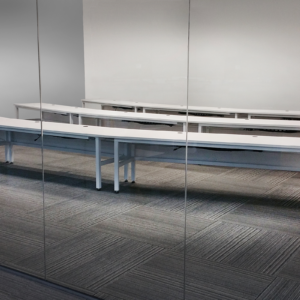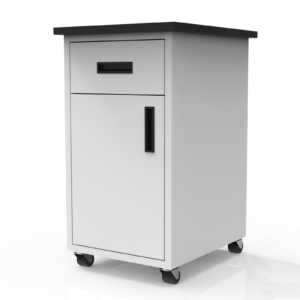Answering the Question: “Who is Coming Back to Work?”
As we look ahead to exiting the Covid pandemic era (hopefully one for all), managers across all industries are facing a challenging labor market – one that is increasingly fragmented, making it harder than ever to recruit and retain workers that are matched to job qualifications and skills.
What’s going on here?
The answer varies a lot, depending on the job function in question as well as the demographics (particularly age) of either current workers or job candidates you may hope to recruit.
Looking back, the pre-Covid job market was pretty stable – with Baby Boomers retiring at a predictable rate, allowing Gen X workers to assume higher leadership roles, and making room for younger Millennial and Gen Z workers to come on stream to work their way up the career ladder.
Of course, we don’t want to minimize some of the hiring issues we faced before the pandemic, including the difficulty of recruiting women and minorities into STEM and manufacturing careers.
Nor can we overlook the impact of the Great Recession in 2008, which hit younger workers and jobs at a particularly bad time in their young careers, forcing many of them into unemployment or delays in getting promotions. (The Great Recession is also one of the explanations for why Millennials have accumulated 11% less financial wealth compared to their Gen X and Baby Boomer colleagues.)
But the labor market in the Post-Covid recovery is very different than what we’ve seen before – for something comparable, we might have to go back to the 1940s postwar demobilization when soldiers returned to civilian jobs and women who worked in the factories to support the war effort went back into the home.

The Big Question: Will Younger Gen Z Workers Rule the Office?
What is surprising to economists today is that so many people at once seem to be re-evaluating their career goals, in many cases seeking to recalibrate their work/life balance.
And these calculations seem to stratify along not only along job functions but across generational lines as well – with many older workers deciding to continue working from home (even if they have to change employers to do so) or electing to leave the job market entirely.
Conversely, many younger workers welcome the idea of returning to the office, which has the potential to drive down the average age of on-site workers to new historic lows.
Let’s look at these issues one by one.
But before we begin, a quick disclaimer: some of the evidence we point to is still relatively anecdotal. It will be many months before demographic researchers can gather enough detailed employment data to definitely “prove” what’s happening one way or the other. But, as is so often the case for managers, you have to work with the information you have available, to make decisions today even though you may not have complete information at hand.
The Great Resignation
The much-talked-about “Great Resignation” is real, backed up by aggregate government employment data.
The reason behind this phenomenon is less clear, however.
But many analysts point to a couple of key factors influencing worker decisions:
In the middle of a serious pandemic, people began to look for greater work/life balance – realizing you only live once (YOLO).
Others may have stuck with a job during the pandemic longer than they would have, and once things reopened, were eager to make a job change.

Working from Home (WFH) Became an Obsession for Some
For many white-collar knowledge-based workers, the opportunity to work from home quickly evolved from an ad hoc emergency to an opportunity to create a new work lifestyle.
These entrenched “work from homers” count the blessings of being able to parent their younger children at home while maintaining a flexible schedule and eliminating expensive, time-consuming commutes, etc.
Many of these workers who bought into this lifestyle are fully invested, literally, with new real estate digs located far from the office – often in exurb or rural areas, or even in prime recreational areas along the coast or located near prime recreational areas, national parks, and ski areas.
Would they rather fight than switch back to work in the office? You bet.
Many of these workers are not going to come back to work in the office willingly.
But not every worker has the opportunity to work from home, nor can the vast majority afford the luxury of Instagram-worthy luxury cabins in the woods or along the Hawaiian coast.
… While Burnout is Hitting Service and Essential Workers Especially Hard
Now let’s look at the many sectors of the economy that were especially hard hit during the pandemic but kept things moving for the rest of us.
We’re talking about the essential workers and the service workers.
Many of these workers either faced layoffs during the pandemic or were asked to work incredibly long hours, often in difficult circumstances.
Now that we’re (hopefully) seeing the backside of the pandemic, many of these workers are re-evaluating their job choices. Will they be coming back to work in the future?
· Hospitality and Restaurant Industries
With business and recreational travel coming to a standstill, the hospitality industry was especially hard hit during the pandemic. Many restaurants catering to office or business travel customers shut their doors forever. Local restaurants turned to lifeline take-out businesses operated with a skeleton staff.
Now that the economy is recovering, the hospitality and restaurant sectors are unable to find enough workers to come back to work at minimum wages. Presumably, many of these workers have left forever to take jobs that offer more stability and greater pay. The result is reduced service offerings, shorter opening hours, and fewer amenities and choices on offer.
Proprietors are looking at hiring bonuses and increased hourly wages to lure workers back, but will this lead to unsustainable price increases that may drive business away for good?

· Doctors and Nurses, Convalescent Caregivers.
Burnout from long stressful hours of treating Covid patients seems to be the main reason that doctors and nurses, as well as caregivers (in convalescent homes, for example), are taking leaves of absence, extended vacations, or leaving the medical care field entirely.
Hospitals and medical groups are offering hiring bonuses and other incentives to attract new healthcare workers, often conducting recruiting campaigns across state lines.
· Teachers
Adapting to distance learning was very stressful for K-12 teachers (and college/university professors). But persistent low pay and increasing abuse at the hands of protestors combined with political arguments over vaccine and mask mandates are driving many teachers out of the field. To replace them, school districts are offering 5 figure hiring bonuses and other salary incentives.
If they can’t find enough teachers, school districts may have to resort to temporary shutdowns, as a school district in Seattle did this week.

· Airline Pilots and Cabin Crew
With airline traffic during the height of the pandemic down over 90% in some instances, airlines encouraged early retirements and attrition – yet layoffs were frankly inevitable.
The current airline industry recovery is driven by cargo freight and a return to leisure travel. Unfortunately for the airlines, their lucrative business travelers haven’t returned to the skies in great numbers, as they continue to rely on Zoom conference calls – but the recent opening up of travel to Europe and Canada might improve things.
Airlines now face the challenge of recalling (and recertifying) pilots laid off during the pandemic, as well as bringing back or recruiting cabin crew.
· Truck Drivers, Port Workers, Distribution Centers
As we’ve written about before, logistics and supply chain issues have been magnified due to a shortage of transportation workers in trucking and the nation’s ports. Demand for e-commerce goods is also driving up demand for warehousing workers in distribution centers (DCs).
Drivers in the trucking industry already skewed to older ages before the pandemic, and with many Baby Boomers electing to retire, the problem has gotten worse. Driving training courses were curtailed during the lockdown, and fewer young people see the trucking industry as a rewarding career.
A similar situation exists in ports, with older workers retiring. On the other hand, distribution centers that pay higher wages (Amazon starts at $15/hour) are attracting workers from other industries; however, rapid warehousing growth is outstripping the number of available workers in many areas.
· Food Processing Industry
Would the nation run out of meat was a real concern at the height of the pandemic lockdown. Butchers at meat processing plants were deputized as essential workers, and food production did not drop to crisis levels, much to the relief of households and those in Washington. However, this came at a cost, with plant processing workers being among the most widely hit with the Covid virus due to the close working conditions in the plants.
· Manufacturing Industry
A shortage of workers has bedeviled the manufacturing industry even before the pandemic, as most job candidates (particularly women) do not recognize the potential that the industry offers in terms of financial reward and career satisfaction.
As more production moves back to this country (re-shoring), the manufacturing industry will need to redouble its educational outreach and recruiting efforts.

· Oil and Gas Industry
Plummeting oil prices in the year leading up to the start of the Covid pandemic led to an employment (and company) collapse in the upstream oil and gas industry as companies shut down wells from Texas to North Dakota.
However, as the economy recovers post-Covid, there are signs of major price increases both in oil and natural gas – thanks to the earlier production cutbacks. Whether energy companies will be able to lure back workers quickly to what is still a “boom and bust” industry is another question, however.

· Unhappy Financial Workers
Finally, did you know that even young Goldman Sachs workers are unhappy? Apparently, all that glitters is not gold, according to the workers of Wall Street.
How did People Survive if they Quit their Jobs or Were Laid Off During the Pandemic?
With so much unrest in the labor market, one question that has interested economists is to find out how people were getting by financially if they quit their jobs or were laid off during the pandemic.
· Unemployment Benefits, Stimulus Payments
The most obvious answer is a combination of stimulus payments and enhanced unemployment benefits, which for the first time were extended to include the growing number of 1099 employees who don’t normally qualify for unemployment.
Governors in Texas and Florida argued that unemployment payments were actually hurting the economy, as there were job openings in restaurants (for example) and cut off the benefits months before the program ended. However, economists compared employment figures with other states that ran the program longer and saw no material changes in employment uptake when the benefits ended, just fewer Federal dollars flowing into Texas and Florida.
This leads us to believe that there are some structural changes taking place, and lower-paying jobs (such as restaurants) are not able to draw applicants as they did before the pandemic.
· Accelerated Retirement Plans
Many older workers who were working beyond their eligible dates to retire took another look at their financial situation and decided to retire earlier than they had planned to, thanks to Covid.
In many cases, these sudden unplanned retirements could pose an issue for managers who have lost valuable ‘domain expertise’ before the institutional knowledge of older workers was captured for the benefit of the company and its younger employees.
· Multiple Jobs + Savings
Another strategy used by those laid off or leaving work was to take on multiple part-time jobs, particularly ones that allowed work from home. A savings cushion (helped in part by stimulus payments) may have helped many workers make this transition.
· New Second Careers
In other cases, laid-off workers and those who elected to quit their jobs have decided to pursue a second, new career outside their original field.
· Covid Entrepreneurs
Contrary to popular stereotypes of young entrepreneurs, traditionally, it’s been the older Americans (over 50) who start the newest businesses.
This trend continued during the pandemic, with older workers launching new companies, from turning hobbies into businesses to launching VC-funded startups.
Big Flashing Signs of a “Job Seekers” Market
Can you read the signs of a “job seekers” market?
They’re everywhere, from big “We’re Hiring” signs outside business to announcements offering signing bonuses.
Wages are going up too, to try to attract workers (and keep up with fast-rising inflation).
Many companies across multiple industries are leaning on employment agencies to do whatever it takes to get new workers hired, from actively poaching workers from other businesses or conducting hiring campaigns out-of-state to bring workers on board.
But despite lower unemployment numbers in October and early November, workers seem to have the upper hand at the moment.
One new phenomenon underscores this notion: job seekers ghosting potential employers.
Yes, the ghosting phenomenon – first identified in data apps – is now happening to companies, as prospective employees either fail to show up to a scheduled job interview or never receive/return calls – even if they receive a job offer.
In the words of those who have ghosted potential employers, the shoe is on the other foot, as many employers in the past often neglected to communicate with job applicants after receiving resumes or conducting interviews.
Will the Unemployment Problem Get Worse Before it gets better?
One thing has hiring managers on edge: how to deal with upcoming Federal Covid vaccination deadlines for companies with over 100 employees.
There has been considerable debate whether a vaccine requirement at American Airlines and Southwest Airlines led to major schedule disruptions over the past few weeks, with thousands of flights canceled. It’s hard to know what the exact cause is, but United Airlines, which was the first to mandate Covid vaccines, has not (yet) had the same scheduling issues.
Other jobs sectors may face turmoil as many workers in law enforcement, transportation, healthcare, and other critical sectors are threatening to quit their jobs rather than get a Covid vaccine.
Meanwhile, Texas and several other states are suing the Federal government over the vaccine mandate – but this effort is somewhat undercut by a brand new report from the Texas Department of Health and Human Services that found unvaccinated Texans are 40 times more likely to die from Covid than the vaccinated.

Unemployment is down, yet we still have Worker Shortages. Why?
It turns out that not all employers are willing to take just any applicant.
Researchers have identified that many employers, especially those looking for white-collar office workers, have established some new criteria for post-Covid era recruiting.
As the Washington Post reports, many employers are focusing on “candidates with several years of experience, availability to work evening or weekend hours, and a willingness to work in-person.”
Unfortunately for companies seeking to hire professional staff, this is becoming an increasingly rare combination.
Many of the workers who have experience are older, and these workers tend to be more satisfied with working from home and aren’t as willing to come into the office, nor work weekends.

The Result is a Demographic Shift Giving Gen Z Workers an Edge in Defining Office Culture
If older workers elect to stay working at home, what does that mean for the culture working on-site in the office?
Some analysts think this is putting the Gen Z workers in the catbird seat, allowing them to exert greater influence over the business culture at an earlier stage in their career.
In a piece titled “The 37-Year-Olds Are Afraid of the 23-Year-Olds Who Work for Them,” New York Times writer Emma Goldberg highlights some of the anxiety felt in office environments when these younger workers are in charge.
Of course, as Goldberg points out, generational change is always uncomfortable, but this one may be happening more suddenly, creating a rift between older workers ensconced in the home offices while younger workers define the office culture at headquarters.
For managers concerned about building cohesive teams, this is a major concern.
Could these generational divisions be exacerbated by letting some workers work from home while others (particularly younger ones) choose the office?
Will workers who are working from home become alienated and decide to up sticks and find another employment opportunity where they feel more comfortable (such as one with a boss closer to their age?)
And how will managers hope to instill important core company values upon new hires, particularly if the existing employees have divided themselves into different camps?
(Look for our upcoming article on how to set up a successful mentorship to assist aspiring students and young employees, which will appear on Jan 20, 2022.)
The Solution? Change the Office Environment to Match your Goals
So what actions can managers take to create a suitable office environment that helps meet your business goals?
First, listen to your workers. Put your ears to the ground and find out what your staff is thinking.
Then devise a strategic plan, whether it’s back to full-time office work, a hybrid approach, or a virtual company strategy where most people work remotely.
Whichever path you choose, make sure it’s backed by management policies that are clearly communicated and supported by good office design.

Option 1: Primary Goal – Bring People Back to Office
For many companies, the management decision is to bring everyone back to the office as soon as practicable to re-establish the type of close personal working relationships and spontaneous collaborations that comes from meeting face-to-face.
Companies choosing this approach will need to make sure the built environment is well ventilated and more spacious than before, with updated floor plans allowing for more spread out work zones as well as opportunities to meet and work outside, weather permitting.
Option 2: Primary Goal – Create a Permanent Hybrid Work Environment
Hybrid work environments may prove to be the most popular strategy post-Covid.
Here, space planners and facility managers will need to adopt a Space-as-a-Service mindset, whereby space allocation can change throughout the day and the week, as different people come into work for different functions, such as departmental meetings, one-on-ones, or group conference calls.
The built environment needs to be attractive and inviting (as well as safe and hygienic) to attract workers from home and allow them to be comfortable coming into the office.

Option 3: Primary Goal – Move to a Virtual Company Model with People Working Remote
On the other hand, some companies may want to move in the opposite direction by pursuing a pure virtual office strategy where nearly every employee can work from a remote location.
The challenge for managers in this scenario is to create a virtual work environment that is both comfortable and cohesive. With employees working full time at home, more thought also needs to be given to making sure employee home offices are efficient and ergonomic – with proper seating, monitor placement, storage, and eye-friendly lighting.
Managers may want to take some of the new courses available on how to manage remote teams, and IT departments will want to ensure that home-based offices are secure to protect the corporate network.
Security is a Major Concern as Ransomware is on the Rise
This last point on maintaining the security of the corporate network when working from home applies to all of us – especially since ransomware hacks are on the rise.
Keep an eye out for our upcoming investigation (appearing Nov 23, 2021) as we look at the dangers of ransomware and what you can do to protect your critical corporate assets.
Formaspace is Your Partner for Modern Work Environments
If you can imagine it, we can build it, here at our Formaspace factory headquarters in Austin, Texas.
Talk to your Formaspace Design Consultant today and find out why our famous name clients, including Apple, Dell, Capital One, Google, Oculus, SpaceX, Toyota, and Twitter, choose Formaspace furniture.




























